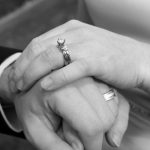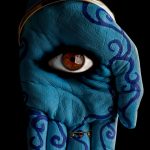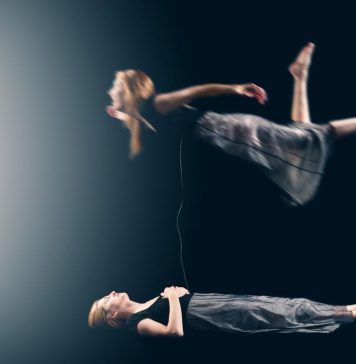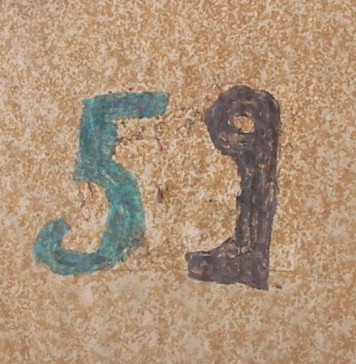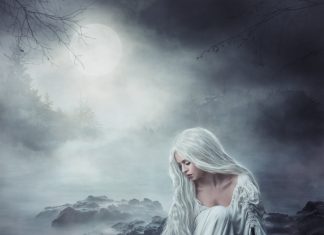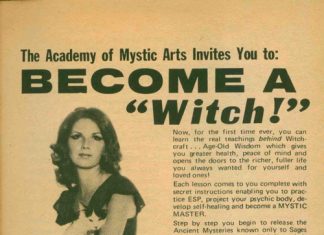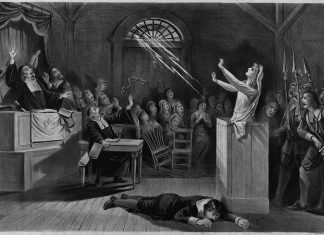Witches and Witchcraft is defined by some as the manipulation of energy, via magic, to bring about a desired change. Witches most often employ the use of spells, rituals and incantations to bring about the change in energy that they want, though modern witches and practitioners of witchcraft may not use any of these things in their practice. Many people in the modern day practice some form of witchcraft and views of witchcraft have evolved beyond the medieval view of the haggard woman who has sold her soul to the Devil for magical powers. Witchcraft can be found in most cultures all around the world and has ancient roots that stretch back to the beginning of humanity. You can read more in-depth articles are Witches and Witchcraft in this article.
What Are the Different Types of Witches and Witchcraft?
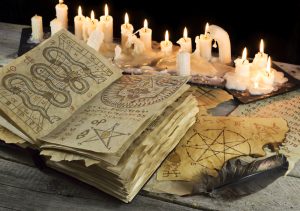
- Wicca: One of the most popular forms of witchcraft. It is very religious and has a balance of ceremonial magic and nature magic. It is based on the idea of balance and equality, with Wiccans believing that the God and Goddess are equal in all things. There are a number of other forms of witchcraft that stem from Wicca including Alexandrian, Gardnarian, British Traditional and Celtic Wicca. Wiccans rarely work alone and frequently form or join covens.
- Ceremonial Witchcraft: Ceremonial Witchcraft is full of rituals, usually kept in a book, that are followed exactly. They are often elaborate, with roots in Egyptian or Quabbalistic magic. The main focus of this form of witchcraft is the ceremony not nature.
- Dianic: Dianic witchcraft incorporates many magical traditions, with a focus on the Goddess. In fact, Dianic witchcraft has virtually no mention of God and is known as feminist witchcraft.
- Druidic: While ancient Druidism has been lost to time, modern druids practice a combination of natural and ceremonial magic that includes ritual sacrifice of grain and meat with an incantation. It is focused around the Mother Goddess and rituals are most often performed in a place of nature that has been preserved such as a forest.
- Pictish: This is a nature based form of witchcraft with almost no religion. It is similar to Celtic Wicca, but the traditions hail from Scotland and Pictish witches tend to be very solitary and rarely practice in groups.
- Pow-wow: This is an old Germanic form of witchcraft that is centered around healing.
- Teutonic: A form of witchcraft that combines the beliefs and practices of the Teutonic tribes of northern Europe including Norway, Sweden, and Iceland.
- Shamanism: A form of paganism with no emphasis on religion, shamans work entirely with nature and the Earth, practicing earth related magic. Practitioners are often known as witch-doctors because of the relationship between shamanism and healing magics.
- Satanic: This is a general term that encompasses forms of witchcraft that are associated with occult and ritual magic, the “Left Hand Path”, and modern day Satanism. It is frequently associated with demonology, black magic, and the Black Mass. Satanic witches may practice Theistic Satanism, worshiping Satan.
- Eclectic Witches: These witches combine many different types of witchcraft together to create something that they feel will suit their needs. Most witches in the modern day are eclectic witches.
- Hereditary Witches: A hereditary witch is someone who was born into a practicing family and brought up learning about and practicing witchcraft.
- Kitchen Witches: A kitchen witch is a witch that focuses their magic on the practical parts of hearth and home. They frequently use spells that involve cooking and crafts. Kitchen witches share many traits with hedge witches.
- Solitary Witches: These witches may practice any branch or type of witchcraft but do so alone, never joining a group or coven. They are often eclectic witches and free to form their own religious beliefs and ideas because they are not bound to a coven.
- Strega: A type of witchcraft closely associated with Aradia, the Goddess of Witches.
Witchcraft Spells
Casting spells is an integral part of witchcraft, whether you cast the spells using ritual and incantation or some other means. Most witches use tools to help with their rituals. The most common tools found in use in witchcraft are:
- Altar: The altar is where everything for the ritual is gathered together. Anything can be used as an altar as long as it as a patron or some other way of channeling energy into the area.
- Anointing Oils: Oils are used for a variety of things, including cleansing a ritual area or creating a spell.
- Athame: The ritual knife or knives, personalized with runes, carvings and symbols that help to blend the energy of the tool with the intention of the user. The blade is usually left dull and unsharpened so that the tool cannot be used for any purpose other than ritual.
- Broom: Also known as a besom, the broom is used to sweep clean the ritual area so that it is ready for use again later. Brooms are also seen as a fertility symbol and used in hand-fasting ceremonies, and many witches keep the broom brush side up by the door to protect their homes from unwanted external energy.
- Bell: Bells are used to open and close a circle, invoke the religious, ward off energies… the list is limited only by your imagination. Bells are believed to be highly spiritual and their use invokes creative energies.
- Candles: Witches use candles to help focus and set the mood. Colored candles hold different value for different types of spells though if you lack the right color candle for a spell you can always use a white candle in its place.
- Cauldron: The cauldron has many uses including scrying when it is filled with water, as well as a holder for small bonfires and a place in which to perform burning spells.
- Chalice: The chalice represents the female, and when used with the athame, the sword or the wand represents the union of male and female in the “Great Rite”.
- Clothing Magickal: Many different types of witches choose to use clothing, while some choose to wear nothing at all. Those who use clothing often dedicate that clothing specifically to ritual work, embroidering symbols and hiding magickal items in the seams.
- Crystals: Crystals and stones can be used to help augment the power of a spell. Be careful, however, as the energy of the spell can affect the energy of the stone. Plus, crystals and stones should never ever be used for banishment spells as the energy of the banished entity can become permanently absorbed by the stone!
- Herbs and Flowers: Fresh or dried herbs and flowers are important for different spells, charms and potions. You will want to keep a variety of different herbs and flowers available in both fresh and dried states.
- Incense: Incense can be used to set the mood for casting as well as to cleanse a ritual area. Certain types of incense and certain smells have different uses.
- Patron: The patron is used to call in the elements as a focal point of magic when performing a ritual. They were traditional made from materials that could be quickly burned if authorities came knocking at your door. They are often used in place of an Altar pentacle that would have been more difficult to dispose of.
- Altar Pentacle: A disk most often made of metal or wood that has the five pointed star inside a circle. It was used as the focal point of magic during a ritual.
- Salt: Salt is used to cleanse the ritual area,, to banish and for protection while casting a spell.
- Spell Book: Also known as the Book of Shadows, the spell book is unique to each witch and has the spells written down with the directions of how you performed them.
- Staff: While not all traditions use a staff, those that do find it to be very important. Each staff is designed for the user, much like a wand.
- Sword: Swords have become more popular and can be used in addition to, or in place of, your ritual knives. Most groups will limit the use of a sword to one person as too many swords can get a bit uncomfortable.
- Thurible: This small incense burner, made from fire-resistant material, is used to combine the elements of air and fire so that the user can purity a ritual area.
- Wand: The wand represents air and is used to cast circles or send energy in a particular direction. Wands can be made from any material but are most commonly made from wood. If a witch does not have ritual knives they most likely have a wand.
Symbolism
Witchcraft is also full of symbols that are considered occultism or pagan. This should be not surprising since the practice of witchcraft stretches back almost to the beginning of humanity. The most common symbols used in witchcraft are the pentagram, the crescent moon, the triple goddess, antlers or horns, the wheel of the year, the cross, Theban runes, the spiral, and the triangle.

